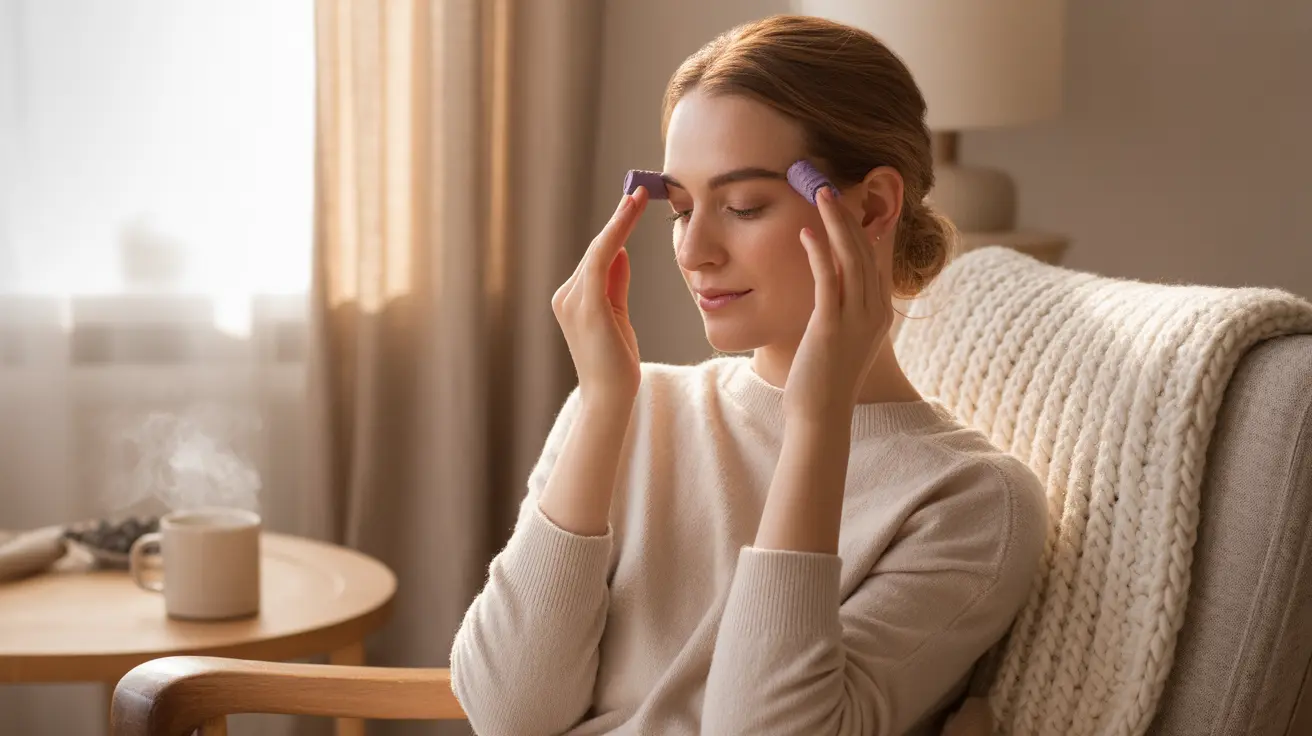Living with migraines can be incredibly challenging, leading many people to seek natural alternatives for pain relief. Migraine sticks have emerged as a popular option for those looking to manage their symptoms without medication. These portable aromatherapy tools combine specific essential oils known for their potential headache-relieving properties.
Understanding how migraine sticks work and their proper usage can make a significant difference in managing migraine symptoms effectively. Let's explore everything you need to know about these natural relief tools, from their composition to application methods.
What Is a Migraine Stick?
A migraine stick is a portable roll-on applicator containing a blend of therapeutic essential oils specifically formulated to help ease migraine symptoms. These convenient tools typically come in a compact size, making them perfect for on-the-go relief. The roller ball application method allows for precise and mess-free use on specific pressure points.
Key Essential Oils in Migraine Sticks
Peppermint Oil
Peppermint oil is often the primary ingredient in migraine sticks due to its cooling properties and ability to promote blood flow. The menthol content creates a soothing sensation that may help reduce tension and discomfort.
Lavender Oil
Known for its calming properties, lavender oil can help reduce stress and anxiety often associated with migraines. Research suggests it may also have pain-relieving properties when applied topically.
Eucalyptus Oil
This refreshing oil helps open up the airways and may reduce inflammation. Its cooling effect can provide additional comfort during a migraine attack.
How to Use a Migraine Stick Effectively
For optimal results, follow these application guidelines:
- Apply to temples and forehead
- Roll onto the back of the neck
- Target pressure points behind the ears
- Use at the first sign of symptoms
- Reapply every 2-3 hours as needed
Always perform a patch test before first use to ensure you don't have any skin sensitivities to the ingredients.
Scientific Evidence and Effectiveness
While personal experiences with migraine sticks vary, some scientific research supports the use of essential oils for headache relief. Studies have shown that peppermint oil, in particular, may help reduce headache intensity and duration. However, more extensive research is still needed to fully understand the effectiveness of migraine sticks.
Safety Considerations
Before using a migraine stick, keep these important factors in mind:
- Always dilute essential oils properly
- Avoid contact with eyes and mucous membranes
- Discontinue use if irritation occurs
- Consult healthcare providers if pregnant or nursing
- Keep away from children
Frequently Asked Questions
What is a migraine stick and how does it help relieve migraine symptoms?
A migraine stick is a roll-on applicator containing therapeutic essential oils designed to provide natural migraine relief. It works through the topical application of essential oils that may help reduce pain, decrease tension, and promote relaxation through aromatherapy benefits.
Which essential oils are commonly found in migraine sticks and what are their effects?
Common essential oils in migraine sticks include peppermint (cooling and pain-relieving), lavender (calming and stress-reducing), and eucalyptus (anti-inflammatory and soothing). Each oil contributes unique therapeutic properties to help manage different migraine symptoms.
How should I properly use a migraine stick to get the best relief during a migraine attack?
Apply the migraine stick to temples, forehead, and the back of the neck at the first sign of symptoms. Gently roll the applicator on these areas and repeat every 2-3 hours as needed. Always start with a patch test and avoid contact with eyes.
Are migraine sticks scientifically proven to be effective for migraine relief?
While some scientific studies support the use of certain essential oils for headache relief, comprehensive research specifically on migraine sticks is limited. Many users report positive results, but effectiveness can vary among individuals.
What are the potential risks or side effects of using a migraine stick for headaches?
Potential risks include skin irritation, allergic reactions, or sensitivity to essential oils. Some people may experience temporary burning or tingling sensations. It's important to follow proper dilution guidelines and discontinue use if any adverse reactions occur.




